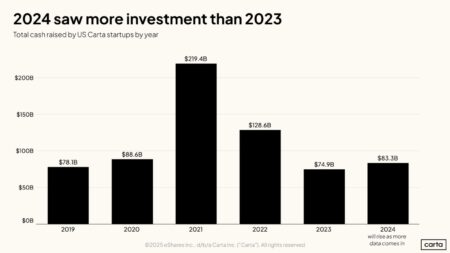Fernando Cowan is the founder of DeepCura, an AI medical scribe and clinical automation platform.
In today’s rapidly evolving healthcare landscape, embracing cutting-edge technology is becoming more of a necessity. I believe one of the most exciting innovations reshaping the way medical professionals document patient care is the AI medical scribe. These systems have proven effective at streamlining clinical workflows, reducing administrative burdens and enhancing patient care.
However, not all AI scribes are created equal. From the AI model’s capabilities to collaboration features, there are several factors to consider before making your choice. Having spoken with dozens of medical providers per day while running my company, here are the criteria I have found to be most important for evaluating AI scribes to find the solution that fits your medical needs.
1. Understanding The Underlying AI Model, Transparency and Technology
When it comes to selecting the best AI medical scribe, it’s important to look under the hood and understand the AI technology that powers it. The sophistication of the language model directly impacts how accurately and efficiently your scribe can capture complex clinical information.
Recent research highlights the remarkable capabilities of AI reasoning models. Trained with advanced reinforcement learning, AI reasoning models use a “chain of thought” process, allowing it to break down and solve complex tasks step by step—much like a human expert would. Because of these standout capabilities, many healthcare-focused AI applications are choosing to integrate AI reasoning models into their platforms. I have found that when a medical scribe uses a robust model with these capabilities, you’re more likely to see accurate, context-aware and efficient note-taking.
2. Longitudinal Context For Complete Patient History
Clinical care isn’t a one-time event—it’s a continuous journey. Effective medical scribes can capture not just the details of the current encounter but also any relevant information from past visits. Your scribe program should allow you to inject specific encounters as context, like building blocks for the current AI scribe experience. There are a few reasons why this longitudinal context matters:
• Holistic Patient View: By having access to comprehensive past encounters, the AI can weave together symptoms, diagnoses and treatments for a clearer clinical picture.
• Accuracy And Efficiency: When the AI already “knows” pertinent patient history, it can reduce redundant questioning and make documentation more precise.
• Improved Decision Support: This contextual awareness allows for better real-time suggestions, such as reminding clinicians of ongoing care plans or unresolved issues that may affect the current consultation.
When evaluating a potential AI medical scribe, make sure it is capable of this longitudinal context. Without it, you risk fragmented notes that could undermine continuity of care.
3. Speaker Separation For Accurate Transcriptions
In a busy clinic or hospital, multiple people often speak during a patient encounter—physicians, nurses, medical assistants, even the patient and family members. If your AI scribe can’t handle speaker separation effectively, your transcripts could become muddled or incomplete. Look for an AI scribe program that can generate organized and coherent notes and transcripts that properly label who said what, reducing the risks of ambiguity and ensuring accountability.
4. Collaboration Across The Care Team
Healthcare is a team sport. Nurses, physicians, medical assistants and administrative staff all play roles in patient care. That’s why an AI medical scribe platform should offer multi-user collaboration features. There are a few ways in which collaborative workspaces can elevate patient care:
• Shared Workspace: Everyone on the care team can access and update the same set of clinical notes, reducing redundant data entry.
• Streamlined Communication: Collaboration within a single interface can help each stakeholder see the complete clinical story at a glance, leading to better-informed decisions.
5. Hyper-Customization For Specialty-Specific Needs
Not all specialties are the same, and neither are their documentation requirements. Whether you’re an orthopedic surgeon or a pediatrician, your note structure can vary greatly. Look for an AI medical scribe that will allow you to customize each specific header or “unit” of an entire clinical note, including macro invocation, with your own specific instructions per header. There are several potential benefits to such hyper-customization:
• Tailored Templates: You should be able to create or adapt templates by simply talking to your AI scribe. For example, customizing headers, subheaders and the format of your SOAP notes or H&Ps should be seamless.
• Reduced Training Time: In my experience, being able to use voice commands to fine-tune documentation structures allows physicians to spend less time manually adjusting the AI’s output.
• Better Compliance: Specialty-specific formats often align with regulatory and payer guidelines, so a customized approach can make it easier to maintain compliance.
6. Strong Integrations, APIs And Webhooks
In an era of interconnected software systems, your AI medical scribe should be able to effortlessly communicate with other digital tools like electronic medical records (EMRs), billing software, Google Workspace and more, and allow you to connect with any application via JSON using encrypted data.
By using application programming interfaces (APIs) and webhooks, you can trigger tasks upon completing a recording—for example, automatically sending referral letters via Gmail, updating a spreadsheet on Google Sheets, or scheduling follow-up appointments in Google Calendar. I have found that this type of integration cuts down on repetitive manual tasks, letting healthcare workers focus on patient care rather than clicking through multiple systems.
Final Thoughts
Selecting the best AI medical scribe involves more than picking the most recognizable brand name. Look for a robust AI model that excels in reasoning—a tool that captures longitudinal context to maintain continuity of care, accurate speaker separation for clean transcripts, multi-user collaboration, hyper-customizable note structures, and powerful integrations—all wrapped in a HIPAA-compliant framework.
Forbes Business Council is the foremost growth and networking organization for business owners and leaders. Do I qualify?
Read the full article here











